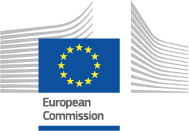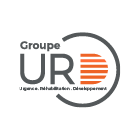22/08/2025
DG ECHO has updated the FAQs to enhance consistency and readability – please see them here.
This site or third-party tools used by it make use of cookies necessary for its operation. By closing this banner, scrolling this page, clicking on a link or continuing navigation in any other way, you consent to the use of cookies
22/08/2025
DG ECHO has updated the FAQs to enhance consistency and readability – please see them here.
10/07/2025
The open public consultation of ISG members for the EU Civil Society Strategy is now available here. It will run until the 5 September 2025.
23/06/2025
A technical update of the ‘Provisions on medical and food supplies applicable to actions funded under the EU Humanitarian Partnership Certificate 2021 – 2027’ has been published.
This revision does not entail a change in the rules but an adaptation of the definition of the obsolete concept of ‘stringent regulatory authority’ to the current WHO approach. Consequently, the concept and reference to ‘stringent regulatory authorities’ have been substituted with the reference to regulatory authorities certified for the highest level according to WHO, which are: ‘WHO Listed Authority (WLA)’ , ‘WHO transitional WLA’, or a ‘WHO National Regulatory Authority operating at maturity level 4’. This revision incorporate these definitions and updates the obsolete footnotes.
03/06/2025
A new version of the Single Form Guidelines has been published, along with a note to partners outlining the implemented changes. These documents are now available on the Reference Documents page for NGOs, and on the Reference Documents page for IOs - under the Single Form 2021 section.
Please also refer to Annex I of the note, which provides an overview of the Minimum Requirements for Final Report Liquidation.
15/05/2025
New FAQs have been published regarding Remaining Supplies (see FAQ 19) and Eligibility of Costs (see FAQs 141, 286, 287) and new updates concerning Temporarily Interruption-Activities Reduction (see FAQ 116) and Certified Financial Statements - CFS - (see FAQ 270) have also been made! You will find them listed in the FAQ page at this link.
07/05/2025
The recording of the second session of the webinar "MGA Article 6.2.A Personnel costs - the 215 days method" is availalbe at this link.
The slides are availalbe at this link.
The AGA – Annotated Grant Agreement is available on the Reference Documents page.
31/03/2025
The recording of the webinar "MGA Article 6.2.A Personnel costs - the 215 days method" is availalbe at this link.
The slides are availalbe at this link.
The AGA – Annotated Grant Agreement is available on the Reference Documents page.
24/03/2025
The updated version of the Humanitarian Aid Contribution Agreement (HACA) is now available. It is in place as of March 2025 for all new contracts with the UN and MSSAs under HIPs 2025. Following a targeted amendment of the EU Financial Regulation (recast 2024/2509) some mandatory technical updates and additional clarifications have been introduced to the contractual template, namely:
Have a look at the Reference Documents page
24/03/2025
DG ECHO and The ASEAN Coordinating Centre for Humanitarian Assistance on Disaster Management (AHA Centre) have signed an agreement on disaster management.
This agreement will further strengthen cooperation between the EU and ASEAN countries in in preparedness and response to disasters.
More information here. The signed Administrative Arrangement is also available for your reference here.
12/03/2025
DG ECHO has published the Guidance Note for DG ECHO Partners on Flexible Funding Measures. You can find this document on the Reference Documents page.
11/03/2025
DG ECHO is glad to announce the publication of its new Health Policy Guidelines: Health Response in Humanitarian Settings.
The document is available here.
21/02/2025
A new set of FAQs on Visibility and Communication has been published. Have a look here.
14/02/2025
The French version of the MGA and Annex 3 has been published and is available on the Reference Page.
06/02/2025
The Frequently Asked Questions related to SEAH – Yearly Reporting on Allegations have been recently updated. You can review them here.
31/01/2025
In November 2024, the single form was updated with the creation of new Key Result indicators (KRIs) for the Health, Mine action, Protection, and WASH sectors.These new features are only related to these four sectors and to new projects (thus not available for MR of ongoing projects created before November 2024).
For more details on the new KRIs please refer to section 7.2 and the annexes (page 80) of the Single Form Guidelines, available on the ECHO partners' website https://www.dgecho-partners-helpdesk.eu/reference-documents-ngo or https://www.dgecho-partners-helpdesk.eu/reference-documents-io
To help you to use these new features, please also carefully read the PowerPoint presentation "MULTI-KRI PER SUBSECTOR" available on the ECHO partners' website https://www.dgecho-partners-helpdesk.eu/reference-documents-ngo or https://www.dgecho-partners-helpdesk.eu/reference-documents-io
Please note the following:
Please do not hesitate to contact APPEL helpdesk ECHO-IS-SUPPORT@ec.europa.eu if you have any questions.
30/01/2025
You can find here the recording of the webinar "Yearly Reporting on SEAH Allegations", held on January 29, 2025.
The objective of the webinar was to provide guidance on how to compile the 2024 Annual Report on SEAH Allegations.
In case you need further clarification, please contact ECHO-REPORTMISCONDUCT@ec.europa.eu




